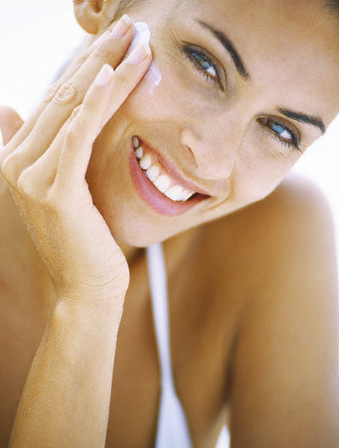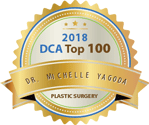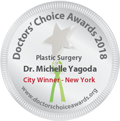
By now, you’d have to be living under a rock not to know that excess sun exposure can cause skin cancer and premature skin aging with its attendant wrinkling, freckling, “age” spots, and leathery texture. In fact, given all the bad news about sun damage, you might be tempted to actually live under a rock! But some sun exposure is important. It allows us to make Vitamin D, which is essential to our physical and mental well-being.
Thankfully, effective sun protection allows us to have fun in the sun without ruining our skin. And since sunscreens and sunblocks have come a long way from their gloppy, greasy, pore-clogging days, you can now feel comfortable wearing sun protection 365 days a year (which you know you should, right?).
To choose the best possible kind of protection, it helps to understand how the sun’s rays harm us: UVA, the rays that cause premature aging, are absorbed deeply by the skin where they affect collagen and elastin, causing freckling, premature wrinkling, and leathery texture while generating oxygen free radicals that cause cell mutation and possible melanoma. UVB, the rays that tan us, can cause sunburn. UVB rays are absorbed at the skin surface where they generate oxygen free radicals that cause cell damage and possible skin cancer.
Preventing sun damage
- Most sunscreens and sunblocks protect adequately only against UVB rays. They often protect minimally against the UVA rays.
- UVA rays are the same intensity throughout the year, regardless of the season. They permeate through glass, so they can affect you even when you are indoors.
- The SPF (sun protection factor) scale pertains only to UVB protection. The FDA is working on adopting a scale for UVA protection; however, none has been approved to date. In order to assure full UVA protection, your sunscreen/block must list “FULL UVA/UVB protection” on its label.
- If you’re confused by the SPF (sun protection factor) numbers, just remember that an SPF of 15 allows you to be in the sun 15 times as long to obtain the same amount of UVB damage as you would without sunblock.
- There are two basic types of sunscreens/sunblocks: chemical and physical.
- Physical sunscreen/block typically includes a clear or micro-aerosolized version of zinc oxide (the only ingredient that adequately protects against the full spectrum of the broad band of UVA rays) and titanium dioxide that protects against UVB and some UVA rays. Long used as an anti-inflammatory for baby diaper rash, zinc (alone or in combination with titanium dioxide) has a proven safety record that makes it the only sunblock/sunscreen safe enough for use on babies under the age of 6 months. It is also the sunblock/sunscreen of preference in those with skin allergies, psoriasis and eczema.
- Chemical sunscreen/block (active ingredients might include octylmethoxycinnamate, PABA, or oxybenzone) is absorbed into the skin. When the UV rays meet the sunscreen/block, a chemical reaction occurs at the skin’s surface. Those with sensitive skin might experience irritation as a result of the reaction of the sunblock/screen with the energy of the UVB rays.
Undoing existing sun damage
While it’s never too late to prevent future damage, Dr. Yagoda offers treatments to erase signs of existing sun damage. Peels and IPL can help restore texture and remove wrinkles and age spots. A surgical facelift can tighten and re-drape skin that is weathered and sagging.


































